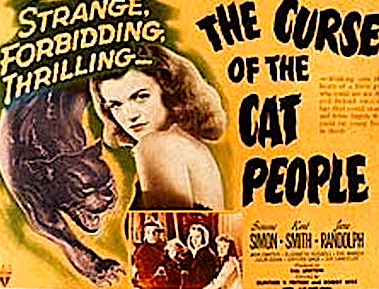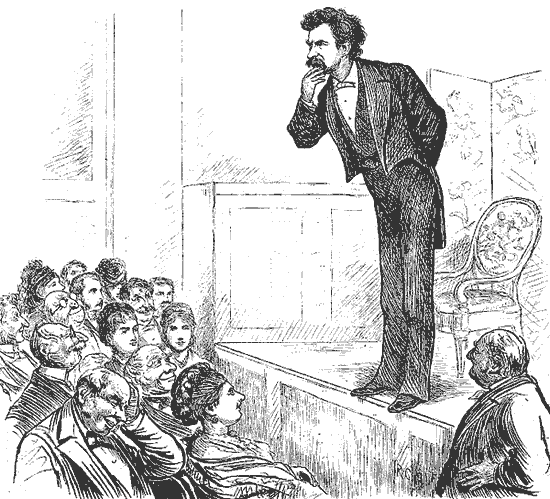
Yes, yes, I know: we’ve been talking about the dos and don’ts of opening pages for a good three weeks now, and we’re all chomping at the bit to move on to the basketful of other marketing and craft issues we so love to discuss here at Author! Author! However, after so many posts on what not to do, I found it enlightening (not to say refreshing) to sink our teeth into the first couple of John Updike’s THE WITCHES OF EASTWICK on Tuesday, didn’t you? In the midst of so many cautions about red flags, it was lovely to see a good author doing it right, even if he did so way back in 1984. I’ve been itching ever since to cite a more recent example, a real grabber of an opening that we know for a fact would wow the Millicents of the world today.
In that spirit, I have a real treat for you today: one of the best suspense opening’s I’ve seen in an awfully long time, excerpted from a novel that came out within the last two years, MJ Rose’s fascinating THE REINCARNATIONIST.
I’m not the only one who regards THE REINCARNATIONIST as one of the top recent suspense releases; BookSense chose it as one of 2007′s best suspense novels. It’s now out in paperback, just in time to be a companion volume to the sequel, THE MEMOIRIST.
Since MJ has long established herself as a friend to writers — those of you seeking guidance on promoting your books should run, not walk, to her marketing blog, Buzz, Balls and Hype — I made bold to beg grovel ask nicely if I might use the opening of THE REINCARNATIONIST as a positive example here. I am delighted to report that she graciously agreed.
THE REINCARNATIONIST makes for a particularly interesting example, because Chapter 1 introduces the reader to two different protagonists in two different timeframes, effectively necessitating two equally arresting hooks, one after the other. That’s a structural challenge that should intrigue those of you out there currently juggling multiple protagonists — and a presentation challenge that would make even the most inveterate Millicent-wower blanch.
Let’s take them one at a time. Here’s the very opening of the book:
Josh Ryder looked through the camera’s viewfinder, focusing on the security guard arguing with a young mother whose hair was dyed so red it looked like she was on fire. The search of the woman’s baby carriage was quickly becoming anything but routine, and Josh moved in closer for his next shot.
He’d just been keeping himself busy while awaiting the arrival of a delegation of peacekeepers from several superpowers who would be meeting with the pope that morning, but like several other members of the press and tourists who’d been ignoring the altercation or losing patience with it, he was becoming concerned. Although searches went on every hour, every day, around the world, the potential for danger hung over everyone’s lives, lingering like the smell of fire.
In the distance the sonorous sound of a bell ringing called the religious to prayer, its echo out of sync with the woman’s shrill voice as she continued to protest. Then, with a huge shove, she pushed the carriage against the guard’s legs, and just as Josh brought the image into that clarity he called “perfect vision,” the kind of image that the newspaper would want, the kind of conflict they loved captured on film, he heard the blast.
Then a flash of bluish white light.
The next moment, the world exploded.
There are a lot of reasons that this is a great opening, but let me first ask the single most important question about the success of a hook: based purely upon these few paragraphs, would you keep reading?
If you were a professional reader who dealt in this type of novel, you almost certainly would, barring intervention by outside circumstances. (Millicent the agency screener’s burning her lip on a too-hot latte, for instance, or her having just broken up with a photojournalist who covered papal security the evening before, or civil rioting. That sort of thing can be very distracting from even a manuscript with as fine a hook as this.)
Why? Well, you may be tired of hearing it by now, but this opening meets the classic agent-pleasing criterion: it presents an interesting character in an interesting situation. What’s more, that’s evident from not only the first paragraph, but the first line of the book.
Impressive, eh? Let’s take a gander at that first sentence to see how MJ managed to pull that off:
Josh Ryder looked through the camera’s viewfinder, focusing on the security guard arguing with a young mother whose hair was dyed so red it looked like she was on fire.
Okay, what’s this sentence got going for it? It introduces an active protagonist — a big plus for Millicent, as we have discussed earlier in this series — into a scene where conflict is already going on. The altercation has not yet grown large enough to include him, but the potential for it is ripe. Yes, Josh is observing the conflict, but he’s not just standing there: he’s doing something, something that reveals who he is; he’s the kind of guy who is attracted to danger.
Translation, from a professional reader’s point of view: this is a protagonist who is likely to run into a burning building, not away from it. He’s probably going to be exciting to follow throughout the story.
This sentence also contains a bang-up visual image, hair…dyed so red it looked like she was on fire. Easy to picture, isn’t it? Think it’s an image that Millicent is going to remember five minutes from now?
That’s quite a laundry list of praiseworthy achievements for a single sentence, isn’t it? Before you shrug it off as the virtuoso trick of an established writer — which it admittedly is — consider taking it as a role model.
Why, you ask me with startled looks? Far too few submissions reflect this, but a good first sentence is inherently a multi-tasker: its goal is not only to begin the story, but to hook the reader into wanting to read it, establish that this is an interesting story, AND convince Millicent that it was constructed by a writer who can, well, write.
An opening sentence that pulls off only one or even two of these laudable aims may not be enough to pique a professional reader’s interest, particularly (as is often the case) if the premise is one that Millicent has seen before. As in several times that week. The more heavy lifting your first sentence can do, the better you will be able to make her sit up and say, “Hey, here is something I haven’t seen before.”
Now that I’ve gotten you good and intimidated, let’s look at the entire first paragraph to see how it lived up to the high promise inherent in that initial sentence:
Josh Ryder looked through the camera’s viewfinder, focusing on the security guard arguing with a young mother whose hair was dyed so red it looked like she was on fire. The search of the woman’s baby carriage was quickly becoming anything but routine, and Josh moved in closer for his next shot.
Before we move on to particulars, I again ask you the vital question to determine the success of a hook: based upon this paragraph alone, would you keep reading? More importantly for our purposes, do you think Millicent would?
My guess is yes — again, absent burnt lips, recent heartbreak, or civil unrest. This paragraph launches the reader directly into what appears to be a disaster waiting to happen, just at the point when it seems to be ready to escalate into something larger. We’re not told what in particular is not routine about the search of her bag, but we are shown what is actually more important than what is going on in the environment around the protagonist: it shows the protagonist getting more involved in the conflict.
I told you that he was the kind of guy who would rush toward danger, not away from it. That first sentence didn’t lie to us.
The next couple of paragraphs build upon both that sense of ambient menace and our hero’s comparatively active response to it. Paragraph 2 lets the reader in on the content of what he fears might happen, both in the world in general and to this young woman in particular. It also, in an almost offhand manner, raises the stakes: this isn’t just any altercation at a security checkpoint, but the entrée to a high-level papal assignation of global significance.
And then the tense situation explodes, first figuratively and later, literally. Our already-engaged protagonist has just been engulfed in the story.
One could quibble about particulars here — I, for instance, would have combined the last two sentences to make a regulation-length paragraph; I don’t think any of the scenes urgency would have been lost by it, and the result wouldn’t have raised the eyebrows of inveterate grammatical nit-pickers like me — but it would be hard to deny the effectiveness of this hook. The reader is sucked right into that blast along with Josh.
But you don’t need to take my word for how Millicent and her boss are likely to react to this opening. Let’s consult the Idol agents’ list of what they like to see in an opening page for reasons that she’d approve of this:
1. A non-average character in a situation you wouldn’t expect.
Oh, you saw the papal audience coming? A reader in this security-conscious age might have anticipated the blast a little, but the conflict between the searcher and the searched is not an image we see much in the press these days. Josh is thus pushing the envelope of our expectations by the end of the first paragraph.
2. An action scene that felt like it was happening in real time.
Well, didn’t it?
3. The author made the point, then moved on.
I particularly wanted to use this opening because it handles suspense so well, in a way that — it pains me to say it, but it’s true — few submissions do. Many would-be suspenseful first pages either spend paragraph after paragraph establishing the physical environment, the players, and/or the situation, often through Hollywood narration-type dialogue between the protagonist and another character, before getting to the action, effectively watering down the reader’s sense that something is about to happen. Either that, or they just have the explosion occur in paragraph 1, without any build-up at all.
I’ve said it before, and I shall no doubt say it again: effective suspense gives the reader enough information to enable her to anticipate what might be about to happen — and then delivering the big bang in a manner DIFFERENT than what she’s pictured. As, indeed, this opening illustrates beautifully.
4. The scene was emotionally engaging.
I also like this example because it invites the reader to be emotional engaged not necessarily with the protagonist, but with the woman with whom he is empathizing. That’s clever strategy for an opening.
5. The narrative voice is strong and easy to relate to.
Check. It’s also genre-appropriate, with vocabulary that will neither intimidate the reader because it is too sophisticated nor insult the reader by being too basic.
6. The suspense seemed inherent to the story, not just how it was told.
Again, check. Even more impressive, this opening provided several layers of suspense: what will happen to the woman? Is she actually hiding something dangerous? Will Josh run afoul of the authorities for moving in, or is he placing himself in danger by getting too close to her? What’s going on in the world that the pope and representatives from various governments would need to confer?
7. “Good opening line.”
We’ve already discussed this one.
8. “There was something going on beyond just the surface action.”
This ties back to both #3 and #6: the opening paragraphs do not overload the reader with background information, but convey that there is actually quite a bit going on here that has yet to be revealed — both to the reader and the protagonist. As Josh moves in closer to get a better shot, the reader comes along with him, hoping for a better look.
Are you getting the hang of this? A good page-one hook is a complex thing, made up of many elements, not all of them exactly what they appear to be.
I’m not going to spoil the story by going too far into what happens next; suffice it to say that there’s a temporal shift, and the reader is thrust into a completely new situation with brand-new characters. Effectively, pulling off such a radical alteration without convincing Millicent that the earlier scene wasn’t just a trick to make her think the book is about something different than she initially concluded (we all know how much she likes that, right?), the opening of the next section has to be as gripping as the first paragraphs of the book, to cajole the reader into coming along for this ride, too.
Let’s peruse the transition, shall we?
Then a flash of bluish white light.
The next moment, the world exploded.
(There should be a skipped line here to indicate a section break, but as my blogging program won’t permit that, I’m leaving this little note for you here. If my program did allow me to show this, you would see clearly that the section break does not require the centered # or ### used to mark section breaks in short stories. If you’re unclear on why and how book manuscripts are formatted differently than short stories or articles, please see the HOW TO FORMAT A MANUSCRIPT category on the list at right. Now back to our example already in progress.)
In the protective shadows of the altar, Julius and his brother whispered, reviewing their plans for the last part of the rescue and recovery. Each of them kept a hand on his dagger, prepared in case one of the emperor’s soldiers sprang out of the darkness. In Rome, in the Year of their Lord 391, temples were no longer sanctuaries for pagan priests. Converting to Christianity was not a choice, but an official mandate. Resisting was a crime punishable by death. Blood spilled in the name of the Church was not a sin, but the price of victory.
The two brothers strategized — Drago would stay in the temple for an hour longer and then rendezvous with Julius at the tomb by the city gates. As a diversion, that morning’s elaborate funeral had been a success, but they were still worried. Everything depended upon this last part of their strategy going smoothly.
What do you think — is this as effective an opening as the first?
I think so, but this time around, I’m going to leave it to you to determine. (Better yet, read a little farther into the book and then determine it.) Place yourself in Millicent’s moccasins and try reading like an agency screener. Keep asking yourself: based upon this alone, would I continue reading?
How might one go about making that call? Well, take it through the criteria we established above: how does it do? To get you started, I could point out that the first sentence is rife with suspense and the first two paragraphs are full of ambient menace. If this were the opening of the book, however, I might suggest a change or two to help facilitate its flight into Millicent’s good graces: the addition of a character-revealing detail or two, perhaps through showing the interaction between the brothers more directly.
More importantly, what do YOU think? You are, after all, the reader, the ultimate consumer of the book. Does it grab you?
Let me add quickly: please don’t write in with your answers; my goal here is not to provide a forum for book reviews or literary criticism, but to provide a good example of the type of call Millicent has to make with every single submission she sees. Not so easy to judge an entire manuscript on so little evidence, is it?
I heard that grumbling. Yes, she could read 10 or 15 pages before she made up her mind, now that you mention it. But would you honestly rather that she got through only 3 or 4 submissions per day, so you wouldn’t hear back on your submission for six months?
That’s a rhetorical question, of course, as agencies are highly unlikely to revolutionize the way they handle submissions because writers would prefer another method. But that doesn’t mean the ramifications are not worth our pondering.
Before I polish off this long, long series by sending you off to think about MJ’s opening pages and your own, there’s something I want to add: while you’re revising, try not to be too hard on yourself. Or too easy, for that matter. This is a tough path you’ve chosen to tread, and for practically everyone who ends up in print, an exceptionally lengthy one. Returning to one’s work with a critical eye to render it more marketable is a necessary part of the process.
Which is to say: don’t despair if you discover that your opening could use some work, or even if you discover that the opening you wrote six months ago isn’t at the same level of polish as the end of Chapter 8 that you wrote yesterday. That’s perfectly natural; every successful author has experienced that particular learning curve.
Since a lot of people like to take stock of their lives this time of year (often, unfortunately, in the course of beating themselves up about lapsed New Year’s resolutions), allow me to suggest a strategy conducive to sanity: when you are assessing how far you have progressed toward achieving your writing goals and what you would like to achieve by this time next year, don’t use the yardstick of an author who is already on the bestseller list, or even one who has a couple of books out.
Why not? Because you don’t know what’s gone on behind the scenes of that particular success story. Chances are, it took that writer years of patient, frustrating effort to get to that point, and really, the ultimate goal of successful publication, or the interim goal of landing an agent, are not the only desirable achievements for a writer.
Here is the standard I like to use: am I a better writer than I was two years ago?
Ask yourself: have I added skills to my writer’s bag of tricks in the last two years? Have I found friends, connections, resources that can help me on my way in that time? If my work is being rejected, am I getting better rejections? And what can I decide to do in the year to come to improve my work still more?
I’m a fairly prolific writer with a comfortable berth at an excellent agency, but that’s not why I’m pleased with my own answers to these tough questions this January. I am very, very lucky, my friends: I started this blog in mid-2005, and 915 posts later, it has undoubtedly made me a better writer, both because it has forced me to take a long, hard look at the premises under which our industry operates and because I have had the opportunity to answer questions from writers at all levels. I have met many wonderful writers, agents, and editors over the past three and a half years, and I have taken continuing education classes to hone my skills. I have exchanged work with very good writers from backgrounds different from mine, and have benefited from their advice. I have finished manuscripts, revised them, and have become a better writer in the process.
And all of this, believe it or not, is actually a better indicator of my progress as a writer than the fact that I’ve sold a couple of books to publishing houses, or the marketing success of the novel my agent is circulating for me right now. Why? Because these activities sharpened my writing and marketing skills. For all of this, I am grateful.
Why do I bring this up at the end of a series on just how difficult it is to get a first page past Millicent? Because it’s not just the end result of landing an agent that’s desirable; the process can be valuable as well. My guess is that those of you who read this blog regularly have probably been doing some fairly hefty writer’s toolbag refurbishment, too.
Don’t forget to pat yourselves on the back for that from time to time, even while you’re taking a scalpel to your opening pages. Through your own persistent efforts, you’re becoming a better writer. Over the next couple of weeks, I’m going to be talking at some length about how to find yourself some help along that difficult path.
Please join me in thanking MJ Rose profusely for providing such a marvelous example of what we’re trying to achieve here. Kudos, MJ, for pulling it off so well — like all of the writers here in the Author! Author! community, keep up the good work!
























